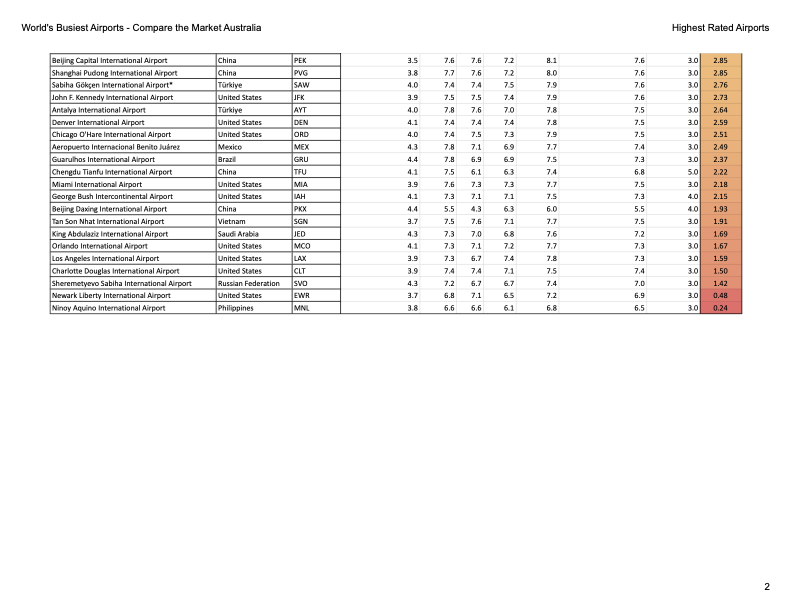The Ninoy Aquino International Airport (NAIA | MNL | RPLL) in Manila, Philippines has gained an unfavorable reputation, ranking as one of the worst airports globally, according to a recent study by Comparethemarket.com.au. Despite being one of the busiest airports in Southeast Asia, NAIA’s poor performance in key areas like passenger ratings, congestion, and overall services has earned it a low spot in the global rankings.
The study, which analyzed 60 of the world’s most popular airports, placed NAIA near the bottom, citing factors such as overcrowding, long wait times, and limited amenities. This comes as the airport continues to struggle with its infrastructure, despite a significant rise in passenger traffic. The Australian Bureau of Statistics reports that Australian airports saw a 10.4% increase in traffic in July 2024, highlighting the growing global demand for air travel.


While major international hubs like Hong Kong International (HKG) and Singapore Changi (SIN) topped the rankings with high scores for cleanliness, services, and overall traveler satisfaction, NAIA has struggled to keep up. The study indexed airports based on daily flights, annual passenger numbers, and Google Review ratings, with NAIA falling short in all these areas.
However, there is hope for improvement. In September 2024, the operations of NAIA were officially handed over to the newly established New NAIA Infra Corp. (NNIC), a consortium controlled by San Miguel Corporation (SMC) and Incheon International Airport. This new management, according to their press releases, aims to tackle the airport’s ongoing issues, including overcrowding, outdated infrastructure, and passenger dissatisfaction. With a fresh focus on modernization, passenger services, and enhanced operational efficiency, the NNIC is expected to play a pivotal role in transforming NAIA into a more competitive and traveler-friendly airport (hopefully).
The airport’s poor ranking highlights the need for urgent reforms, but the NNIC’s recent takeover signals a new era for the airport. The transition to new management comes at a crucial time, with growing pressure on NAIA to meet international standards and offer a smoother travel experience for its passengers. To fund these improvements, the NNIC has implemented a series of rate increases at NAIA. This includes hikes in overnight parking rates and concessionaire rental fees, which have raised concerns among travelers and businesses operating at the airport. These changes come as part of the broader strategy to generate revenue for much-needed infrastructure upgrades and to meet the demands of growing passenger traffic.
As global travel continues to rise, the success of the NNIC’s efforts will be critical in determining whether NAIA can improve its reputation and secure a better standing in future global airport rankings. With fresh leadership at the helm, there is a renewed sense of optimism for the future of the NAIA (as we hope so).
